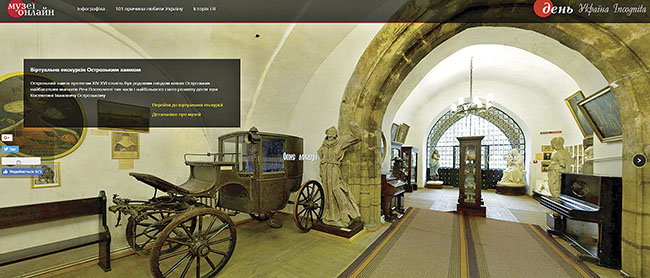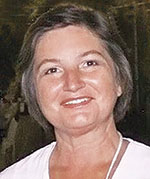Museum in computer
Why it is important to digitize cultural heritage and how this is going on in Ukraine
The “golden horseshoe” of Lviv region castles, the masterpieces of European art, such as, for example, those at the Parkhomivka village art museum, – can fascinate tourists from all over the world. But how can they learn about this?
Resources that collect digitized cultural heritage have been in the making for 20 years now. Digital technologies create incredible opportunities to see a certain artifact without even going out of the house – thanks to online digital collections. For example, the Europeana online platform of cultural heritage presents books, archival documents, photographs, and pictures from about 3,500 institutions of Europe: it is 51.5 million images, sound recordings, texts, videos, and 3D models.
If you type “Ukraine” in the search window, you will get thousands of links to the artifacts kept at libraries, archives, museums, and other collections in the Netherlands, the UK, Moldova, Estonia, etc. Finally you will also reach objects from Ukraine, but, to do so, you will have to rummage through megabytes of data. So, digitizing the national heritage is an urgent job in order to preserve and globally promote valuables. Incidentally, it will be recalled that in 2011 Den launched the “Online Museum” project which comprises over 20 virtual excursions to cultural sites in Ukraine and abroad.
 Olha BARKOVA, researcher and expert in information technologies and digitalization, works at the company BALI Specialized Center and has been organizing “Digitized Heritage” seminars for five years. Among the participants in these events are museum employees and private collectors from all over Ukraine. Experts from Italy, Britain, Belgium, Poland, Germany, Malta, and the CIS speak there live or through Skype. We are discussing with Olha what hinders the digitization of Ukrainian cultural heritage, how this process is going on in the world, and what practical results it produces.
Olha BARKOVA, researcher and expert in information technologies and digitalization, works at the company BALI Specialized Center and has been organizing “Digitized Heritage” seminars for five years. Among the participants in these events are museum employees and private collectors from all over Ukraine. Experts from Italy, Britain, Belgium, Poland, Germany, Malta, and the CIS speak there live or through Skype. We are discussing with Olha what hinders the digitization of Ukrainian cultural heritage, how this process is going on in the world, and what practical results it produces.
ON “UKRAINICA IN EUROPEANA”
“Digitalization began at the end of the last century,” Barkova says. “I began to deal with this when I worked at the National Volodymyr Vernadsky Library of Ukraine – it was necessary to digitize the Lviv Apostle [Ukraine’s first printed book published in 1574. – Author]. Since then I’ve been studying how this is being done in the world.
“The 1990s saw the emergence of the computer equipment and scanning devices, and digitalization began to rapidly develop all over Europe except for Ukraine. The internet has been informing lately about a very large number of digitized artifacts which the world’s museums and other institutions of memory are making easily accessible. Unfortunately, there are no Ukrainian collections on these lists. In particular, Europeana has dozens of thousands of objects that concern Ukraine, and only 1,500 were made available by our institutions.
“To make up at least in some way for our backwardness in cultural digitization, we paved our own way to digital Euro-integration: in 2013 we launched the ‘Ukrainica in Europeana’ initiative and a series of informational and educational measures ‘Digitalized Heritage: Preservation, Access, Representation’ and held the first Summer School of Digital Competences in Odesa. In five years, we have held 15 events in five cities of Ukraine – about 600 museum experts from 47 cities and villages attended them. This year we have changed the theme to ‘Digitalized Heritage: Consolidation, Integration, and Creativity.’
“But this activity is only the initiative of specialists and institutions which strive to develop together with technologies and the world. In the Ukrainian sphere of culture, digitization has not yet achieved the level of continuous information productions and our heritage is basically not present in the digital milieu.”
EUROPEAN-LEVEL 3D PROJECTS
But still do we have any examples of such projects?
“We surely do. We have no mass-scale digitalization, but there are some brilliant examples and interesting solutions – not only in digitalization, but also in connection with cutting-edge technologies. I mean digital 3D modeling, virtual tours, and application of the augmented reality technology. They are not too much popularized. Specialists do this in various nooks of Ukraine. For example, ‘Virtual Tustan’ is a 3D model of a fortress in Lviv oblast. I think it is a European-level project. The 3D models show how Tustan was built and ruined. There is in fact no fortress left, only some remnants on which you must not even step. To virtually reproduce the town-fortress, the augmented reality technology – a brand of today – was applied. Coming up to a certain place, you can aim the mobile device on some stones and see on the screen the part of the fortress that used to be there.
“Other examples are works by Pixelated Realities enthusiast specialists who deal with digital 3D fixation and preservation of the vanishing historical structures in Odesa. Architects from Shevchenkivskyi Hai [open-air Klymentii Sheptytsky Museum of Folk Architecture and Folkways in Lviv. – Author] make 3D models of rural houses on the museum’s territory and their documentation. One of the purposes of digitalization is insurance coverage so that an object can be restored if it is ruining. Meanwhile, the Lesser Academy of Sciences has created – by means of GIS-technologies as part of the “Museum Planet” project – an interactive map with information about all museums in Ukraine, which makes it possible to search museum collections. The Rivne Oblast Ethnographic Museum uses 3D reconstructions in archeological explorations, and digital aerial survey was used in Kyiv to examine the foundations of the Church of the Tithes.”
DATABASE AT FIRST
So, it is not enough today to just digitize archives and post them in the internet?
“Let us say differently. The first thing to do is to digitize and feed metadata and information about the object into the database. It is a derivative material for all the other applications. As a matter of fact, digitalization is a digitized reproduction of something analogous – books, pictures, structures, coins, etc. Digitalization by itself has no sense. It is not just a digital recording – it is the creation of an object’s digital image which should be as much identical with the original as possible. It is also necessary to make it possible to see the digitized object fully though a special program – to leaf over the book, examine the sculpture from all sides, bring the picture closer and scrutinize its fragments.
“The database allows searching for objects, forming various collections quickly, keeping an electronic account, establishing links between objects and other collections, etc. These things are interconnected, for you can’t find an object if it is not in the database and the museum’s and global search systems.
“The global resources of humankind’s digitized heritage are the World Digital Library operated by UNESCO and the United States Library of Congress, and Europeana set up with EU support. There are a lot of national projects. They provide access not only to artifacts, but also to regulations and methods of digitization.
“Digitalization techniques are very sophisticated now, but they are not developing in our country. We do not even have information about all collections. Only a few museums have systems that work with electronic bases. The whole world has already transferred information from catalog cards and museum labels into databases and handles it electronically – but we haven’t.”
Why?
“This is not being done systemically in Ukraine – it is underfunded. Digitalization and information technologies in general are a costly thing. That’s why only ‘moneyed’ organizations can afford this. And who has money in this country? It is first of all banks that began to digitize documents. Other consumers are big businesses and departmental institutions.
“In my view, the scanning equipment market ground to a halt here when these consumers made their document circulation electronic. But culture has no money and, hence, does not make a demand. No demand – no development.
“The same applies to software. There are no national software products for the needs of digitalization. Although Ukrainian programmers are among the best in the world, they do not work for culture, for they are expensive. Also expensive for cultural institutions are IT companies’ designs and foreign software products. This is why there are no adequate offers to culture.”
“NOBODY IS ACCUSTOMED TO FUNDING DIGITALIZATION”
What hinders digitalizing Ukrainian heritage?
“The main cause is lack of the basic knowledge of contemporary development, lack of ‘legal confidence,’ technical and juridical security. It is still feared that to post a collection online means to expose it to criminals. But, in reality, publication in the internet is sort of protection. Digitalization requires adequate knowledge and skills.
“Nobody is accustomed to funding digitalization, and museums do not make proper requests. They do not cry out that they can’t introduce a technology unless a certain amount of money is provided. The information policy of organizations does not take into account the needs of digitalization. Besides, their inertia also plays a considerable role. They say: ‘We won’t be given money all the same.’ ‘Did you ask?’ ‘No.’”
You have been holding “Digitized Heritage” seminars for five years. To what extent is it of interest to museums? Has there been any progress in this period?
“There is some progress. We give knowledge about new technologies, which educational institutions do not give. Only a few specialists all over the country have enough expertise to know what’s going on in this sector of technologies. ‘Digitized Heritage’ seminars really attract these specialists.
“We have already formed a certain professional community. The company I work in is the core of the team, the initiator, and the main organizer. Our ‘headquarters’ is the State Polytechnic Museum at KPI University, our regular partners are the Ukrainian Center for Museum Development, the Lesser Academy of Sciences, Wikimedia Ukraine, and the Ukrainian League of Archivists. We have regional partners in Odesa and Kharkiv. And, naturally, this community integrates our colleagues – specialists of museums, libraries, archives, research and higher educational institutions, collectors, and IT experts.
“Our seminars teach, broaden professional horizons, and contribute to new projects and collections. For example, we can see a rapid digital development of the private ‘Krovets Ethnographic Collection.’ We are also pleased with achievements of the Pshenychny Central State Film, Photo, and Audio Archive of Ukraine, where digitalization is developing steadily and adequately. We have digitized certification at the National Museum of Ukraine’s History in World War Two and image files of registration documents at the National Preserve of ‘Kyiv Fortress.’ Besides, the State Polytechnic Museum has carried out a project of QR-code access to the digital collection of open-display exhibits.”
Newspaper output №:
№17, (2018)Section
Close up





